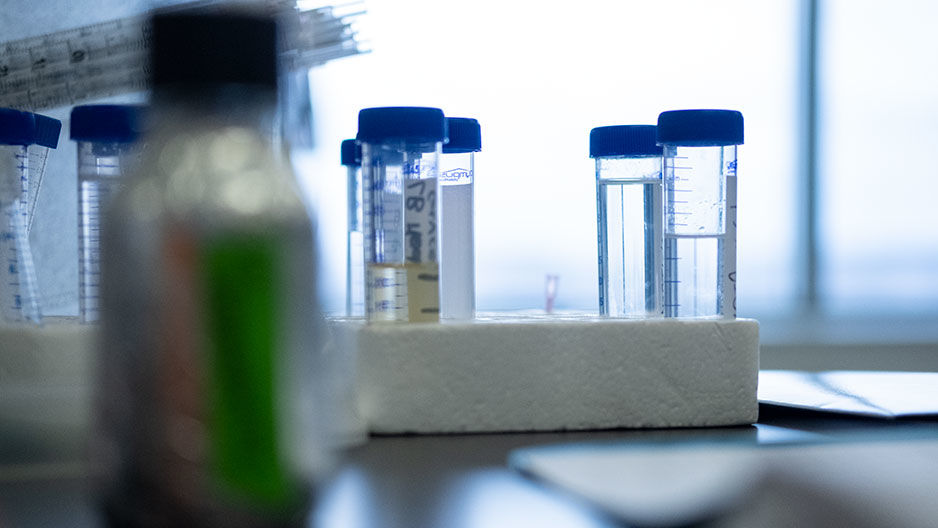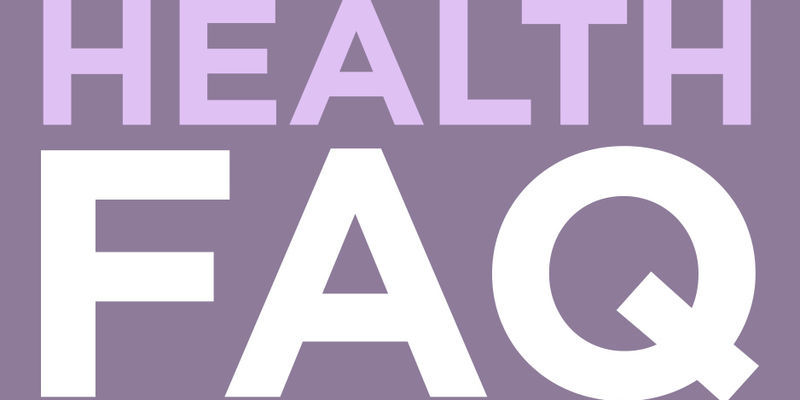Your coronavirus questions, answered by experts
An epidemiologist and a physician with expertise in infectious diseases share their insights on the outbreak that’s grabbing headlines.

Updated Feb. 28, 2020
NOTE FOR INTERNATIONAL CAMPUSES: See the latest information for Temple University, Japan Campus and the latest information for Temple University Rome.
The novel coronavirus that originated in China in December, now known as COVID-19, continues to grab headlines and spark concern among public health officials, including those at the Centers for Disease Control and Prevention (CDC) in the United States.
In the landscape of such extensive media coverage, it can be difficult to sift through what’s reliable and what’s rumor. Two Temple experts—who take part in training the next generation of physicians and epidemiologists who will work to prevent and respond to outbreaks of illnesses COVID-19—help to cut through the noise and separate fact from fiction.
The experts—Professor of Medicine Peter Axelrod, an infectious disease specialist at Temple University Hospital, and Assistant Professor of Epidemiology Krys Johnson, an epidemiologist and instructor in the College of Public Health—shared their insights on the COVID-19 epidemic.
Axelrod chairs the Infection Control Committee at Temple University Hospital. Johnson teaches epidemiology—the study of the causes and distribution of disease in populations—and served as an emerging infectious disease fellow for the Florida Department of Health during the Zika virus outbreak in 2015–2016.
Answers are edited for clarity.
Q: What is a coronavirus, and what are some characteristics that make this particular coronavirus—now known as SARS-CoV-2, which causes the disease named COVID-19—different from others?
Axelrod: Coronaviruses are common community-acquired respiratory viruses, and their manifestations really range from a mild cold to a severe pneumonia. There are some strains that seem to be particularly likely to cause severe respiratory infections, such as the strain several years ago in the Middle East called Middle East respiratory syndrome (MERS), and SARS, or severe acute respiratory syndrome, in the early 2000s in China. They were both coronaviruses, but we mostly see these viruses as causing a cold. This particular virus, we know, is genetically different from other coronaviruses that have been discovered in the past. Researchers have been able to sequence the RNA of the entire virus, so they know that it’s different. It seems to be not as severe as the SARS coronavirus, at least so far.
Johnson: A coronavirus simply is a type of virus. We have multiple viruses that we deal with all the time. We’re very familiar with influenza virus, for example, and we know there are different strains of it, and the coronavirus is just that way, there are different strains of it, and they comprise things like the common cold or MERS or SARS. We hear about MERS and SARS more often because people die from them more often. But if we actually compare them to influenza, more people die of influenza every year than any of these—MERS, SARS or other major coronaviruses.
Q: We’ve heard a lot about the market in Wuhan, China where this virus is suspected to have originated. Where do these viruses come from, and how do they spread from animals to humans?
Johnson: We think that they come from an animal reservoir, which means that they infect animals, and whenever they’re trying to replicate, they typically replicate just in an animal and are passed from animal to animal and usually don’t make the jump to humans. But when they do, it can be because someone is consuming infected meat that hasn’t been prepared properly. It could also be that in the process of butchering, that someone has a cut, and that becomes infected with bodily fluids from one of those infected animals. Either of those can be a potential way for that virus to make the jump from an animal to a human, and it’s not particularly uncommon. Those are actually called zoonotic diseases, and that just means that humans can get them from animals.
Q: What are the main symptoms of this coronavirus?
Axelrod: From what we know, it seems like the main hallmarks are fever and respiratory symptoms—mostly cough, shortness of breath, chest pain. It can be very similar to the flu, but the cough and shortness of breath are more prominent.
Q: What can people do to avoid getting sick, with a coronavirus or any other illness?
Johnson: If you want to reduce the likelihood of getting coronavirus, you would do the same thing that you would do to prevent getting the flu. Make sure you wash your hands as often as you can, use an alcohol-based hand sanitizer—they have found the coronavirus does die in the presence of an alcohol-based hand sanitizer, so that’s a good thing to keep on your person at all times, especially if you use a train or a bus and you don’t really have access to washing your hands. Make sure that if you’re sneezing, you’re sneezing into your arm so you’re not putting droplets out into the atmosphere, and if someone sneezes or coughs around you, just try to be very cognizant of that and make sure you’re not breathing in anything that they could’ve just coughed up.
Q: Where can people find reliable information about the coronavirus epidemic?
Johnson: I would recommend people go to the same information sites that epidemiologists, public health workers and clinicians use. We use the Centers for Disease Control and Prevention (CDC) and the World Health Organization as our go-to sites to see what the new information is for any disease, but especially for novel diseases like this coronavirus. The CDC has been good about making sure that we get the most up-to-date information about coronavirus, including how it transmits and how infectious it is.
Q: How are cases or suspected cases of this new coronavirus identified and differentiated from other similar illnesses, like the flu?
Axelrod: One thing we don’t really know a lot about yet is the mild cases, so if somebody has a sore throat and a little bit of a cough and doesn’t feel that sick, could this be the new coronavirus or not? We may only be seeing the more extreme end of it, because people with more mild illness aren’t seeking medical care.
With the flu, you often get severe muscle aches and headaches; with this coronavirus, evidence suggests shortness of breath develops in 55 percent of cases after about a week. That’s not like the flu—with the flu, you rarely would be short of breath.
In this country, the flu is way more common, so really the main clue would be a travel history. If there starts to be secondary transmission in the U.S., it gets trickier.
Q: How does the lab test to identify this new coronavirus, work, and why is it taking some time to confirm or rule out cases?
Axelrod: They’re basically looking for the viral RNA, and it’s kind of like a jigsaw puzzle. If you’re putting together a jigsaw puzzle and your piece doesn’t fit, you can’t make it fit, but if your piece fits exactly, it slides right in. Tools to find RNA are like that. It has enough of a pattern to it so not just any virus can slide right in; it has to be the right sequence.
It can be done fairly quickly within a couple hours, as opposed to a cell culture, which takes days—but right now, the materials available to test for this coronavirus are only available at the CDC. They’re trying to make it available at state labs, but it isn’t yet, so the CDC was sort of bombarded with requests for testing. Labs that are set up to do PCR testing can handle a lot of samples, but all of the materials have to be made ready for the specific virus being tested. But it’s not instantaneous.
Q: What’s the relationship between this virus and pneumonia?
Axelrod: Pneumonia really just means an infection of the air spaces of the lung. When I talk to medical students, I tell them to imagine a sponge. The sponge has little tiny air spaces all within it, that’s kind of what the tissue of the lung is like. If that sponge was put under water, now all of a sudden all those little holes are filled with water, and if that fluid is infected, it’s pneumonia.
Q: Should people in the Philadelphia region or the United States in general be concerned at this point?
Axelrod: Concerned, but certainly not panicked. We don’t yet know how widespread this infection will become in the U.S. The government is thinking about closing public spaces like schools and churches if there are pockets of infection which, of course, would be very disruptive, but we don’t yet know how far, and how fast, this infection will spread in the U.S., if at all.
Johnson: The important thing to remember about this coronavirus is that we’re mainly concerned because we don’t know that much about it, but really, the flu impacts a lot more people. Hundreds of thousands of people in the United States get the flu every year, and thousands of people here die from it. No one yet in the United States has died from the coronavirus, because we have accessible supportive therapies. It’s important to make sure that you’re getting your flu vaccine, and also important to make sure you’re taking precautions so that you don’t come into contact with any respiratory illness, including the coronavirus.
Q: The CDC has issued travel advisories recommending that people avoid travel to China and to South Korea during this epidemic. What does this mean, and how common is this?
Johnson: The CDC issues these travel advisories pretty much every time there is an epidemic, so when we had the Ebola epidemic in western Africa, there was a travel advisory for that area. When MERS was an issue in Saudi Arabia, there was a travel advisory issued there. So these are very commonplace, and they’re meant to be preventative. And if people need to travel there anyway, they just need to be very cognizant of their personal hygiene and make sure they’re being proactive in preventing the likelihood of being infected by those illnesses. MERS, SARS and the current coronavirus all share that they were most often communicated person-to-person in very population dense areas. As long as people are taking care of themselves, making sure if they’re symptomatic, that they’re staying home, so if you have a fever, if you have chills, whether it’s the flu or coronavirus, you should stay home and take care of yourself. If you have any likelihood of having this actual coronavirus, you should call your physician before you go in just to make sure they’re taking the appropriate precautions for themselves and for other patients who may be in the waiting room.
Q: Officials from the CDC recently said that the United States should be prepared for an outbreak of COVID-19 here. What does this mean, and what can people here in the U.S. expect to see occur in the next several weeks?
Johnson: This means that we want our public health departments and professionals to make sure that they have the resources they need in the event that a coronavirus case occurs in their area. Since we have known about COVID-19, public health officials have acted out of an abundance of caution and have done so more quickly than the response to Ebola, which means we learned our lessons from that outbreak. We should expect to see increased screenings in doctor’s offices and clinics and hopefully more hand sanitizing stations throughout high-traffic, public areas in the U.S.
Q: What might a COVID-19 outbreak look like here in the U.S.?
Johnson: For the elderly and immunocompromised, it would look like a severe respiratory illness. For everyone else, it might just look like the common cold or other respiratory viruses that we see during this time of year. We rest, take care of ourselves, and usually we recover without major medical interventions. Let’s think about H1N1-2009 (also called swine flu). We had about a month where people who had it were told to stay home to reduce the spread. Very few people died from it (again, the elderly and immunocompromised), and then we made a vaccine for it to protect us from contracting it again. That is what the CDC is suggesting could happen here.
Q: Is it safe to travel out of the country at this point? Why do outbreaks of the virus seem to pop up so quickly, as they did in South Korea and Italy?
Johnson: It is safe to travel outside of the country, particularly if you are practicing good hand hygiene. Out of an abundance of caution, you may choose to wear a mask on an airplane to reduce inhalation of contaminants, but it is more important to wash your hands thoroughly, avoid touching your face, and use alcohol-based hand sanitizer to reduce your likelihood of infection.
Outbreaks seem to pop up quickly because the symptoms of COVID-19 can look like respiratory illnesses allergies that we are used to seeing during winter and spring months. Once one case is identified, then health officials talk with that person’s friends and contacts, finding that many of them have the same symptoms- this is where these seemingly abrupt outbreaks come from.
Q: What’s the difference between an “imported” case of COVID-19 and a community-acquired case? What does sustained community transmission mean?
Johnson: An imported case is when a person travels to an area (in this case, China) where the disease is being spread in the community, then returns to their home country with the illness. A community-acquired case is when a person develops a disease without having been in contact with someone who we know has the disease, meaning that they came into contact with it in the community. Sustained community transmission is what we see with the common cold- it goes around throughout the population and it’s never really gone. Usually in this case the disease isn’t too severe, so people are still going about their daily lives and that’s how the disease infects other people.
Q: Has Temple University Hospital taken any additional precautions knowing that this virus is out there?
Axelrod: Yes. Ever since the Ebola outbreak, in our emergency room, there have always been travel questions for everybody who comes through—even if you have something minor, like a splinter. It’s now been updated to include this particular virus and travel to China and any other heavily affected areas, and we’re trying to make sure any place within the health system people visit, including outpatient clinics, asks, too. There is now an updated travel screening application in Epic, our health centers’ computer system.
Q: How contagious is this particular virus?
Axelrod: Respiratory viruses can spread by large droplets in the air (mainly contagious within six feet of a person coughing), by aerosol (smaller droplets with spread across farther distances) and by touch—for example touching a table top contaminated by someone infected and then touching one’s nose. COVID-19 appears to spread by all of these methods, but less by aerosol than the others; therefore relatively close contact, usually for fairly prolonged periods, is typically needed for transmission. In China, over 1,000 health care workers have become infected, and one would think they were taking precautions (unless they were treating patients not known to have this infection)—which is concerning. The rapid spread in China tells us that it can be quite contagious, but the total number of persons infected is very low compared to China’s population of 1.4 billion. So, I think concern, not intense worry, is the best approach right now.
Johnson: Recent estimates show that COVID-19 is no more contagious than the flu. Since it’s transmitted in the same way as the flu, too, we should make sure we’re being careful to clean our hands with soap and water or alcohol-based hand sanitizer.
Q: What should we expect to see happen with this virus in the coming weeks and months?
Axelrod: We’ll have to see what happens with worldwide transmission over the next two to three months to determine if it’s going to be a commonplace concern or not. We just don’t know that yet.
Johnson: In the coming weeks and months, we should expect to see information evolve. We’re starting to get better information on how contagious COVID-19 is and how severe it is. As we learn more, we revise what we’ve learned. With Zika virus, we had new guidance from CDC every Friday. We have seen similar frequency of updates with the coronavirus. It’s important to make sure that we’re checking the CDC and World Health Organization’s websites for the most reliable and up to date information about COVID-19.


